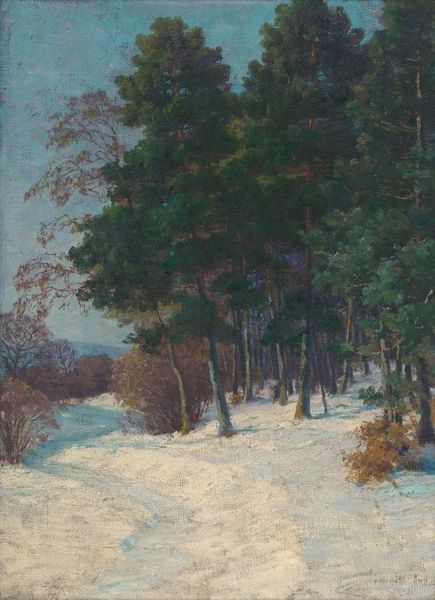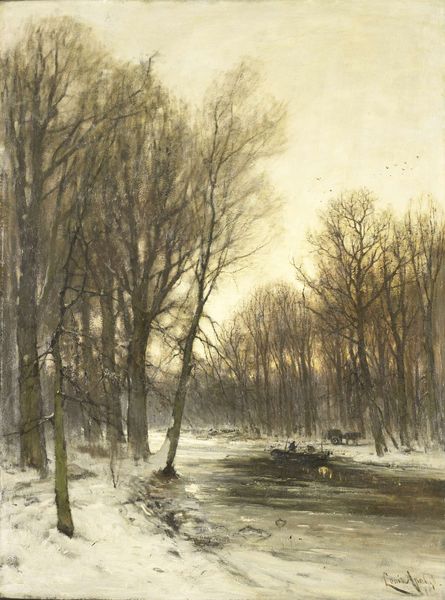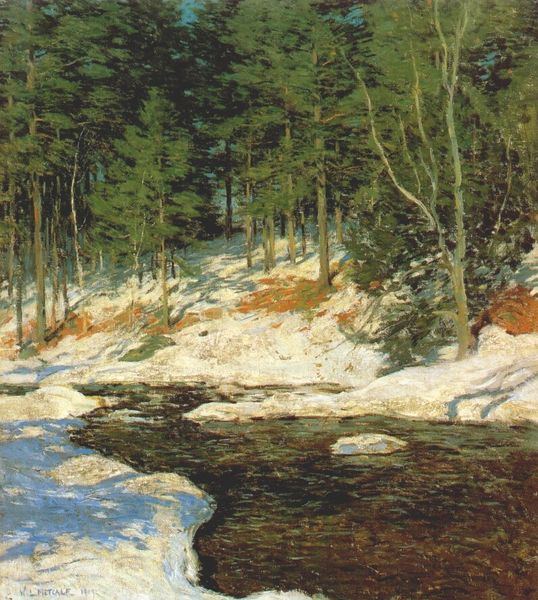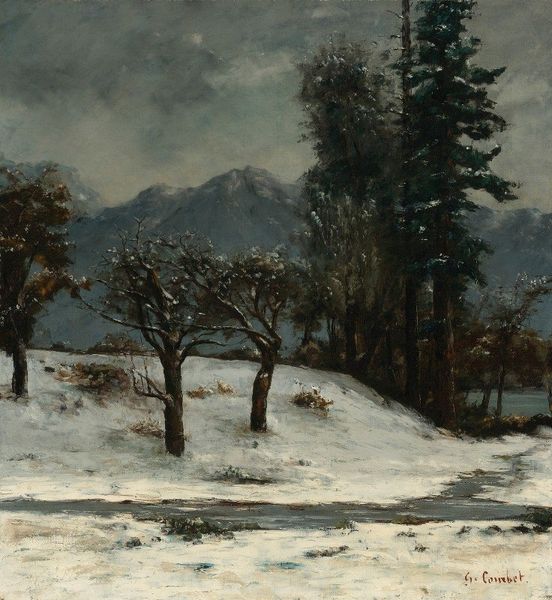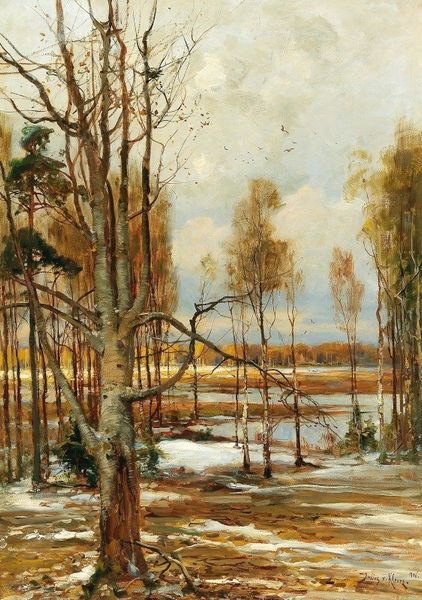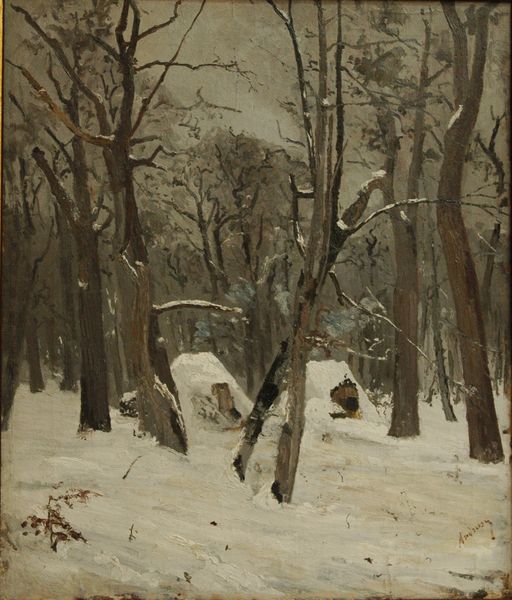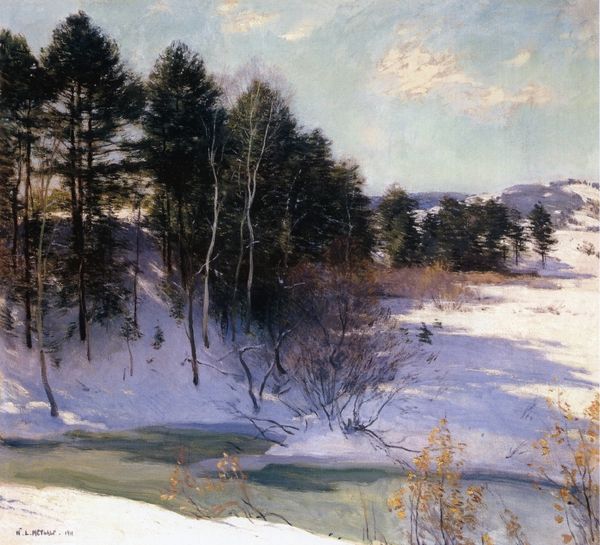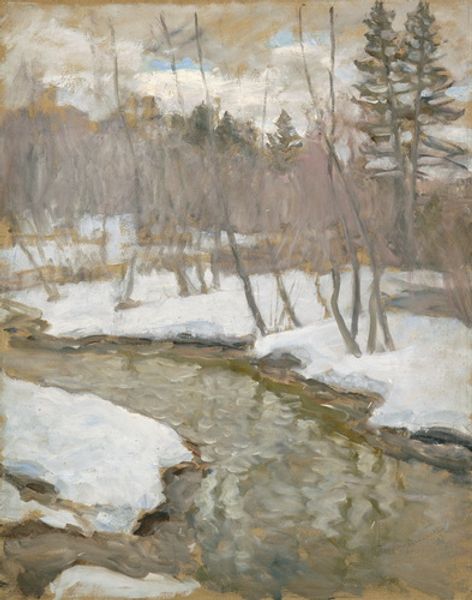
Copyright: Public Domain: Artvee
Editor: This is "Thaw," an oil painting done sometime between 1877 and 1880 by Ladislav Mednyánszky. The way the snow sits on the branches and along the stream… it feels incredibly transient, like any moment the scene could completely transform. What stands out to you in this piece? Curator: What strikes me is how Mednyánszky situates himself, and by extension us, within a larger social and political narrative through a seemingly simple landscape. Consider the socio-political context: this work emerges from a period of intense nationalistic sentiment and the rise of landscape painting as a means to define and claim territory. The very act of painting en plein air, directly from nature, was a statement about authenticity and connection to the land. Does this observation change your perception of the painting? Editor: It does, a bit. It makes me think about the role of landscape in nation-building. Curator: Precisely. Now, consider how Mednyánszky renders this scene. The thawing snow suggests not just a change in season but a moment of vulnerability and flux. How might this resonate with contemporary anxieties about national identity and belonging in a region undergoing significant political shifts? Editor: So the thawing landscape becomes a metaphor for societal shifts. It’s not just pretty scenery, but a reflection of what’s happening in the world around him. Curator: Exactly. Mednyánszky is using the visual language of romanticism and realism not merely to depict nature but to engage with the complex issues shaping his society. What do you think the effect is on its contemporary viewers, given the painting’s symbolism? Editor: That’s given me a totally new way of thinking about landscape painting. I appreciate how much historical context can influence a painting’s meaning! Curator: And hopefully, it illustrates how art is never truly divorced from the social and political currents of its time.
Comments
No comments
Be the first to comment and join the conversation on the ultimate creative platform.
